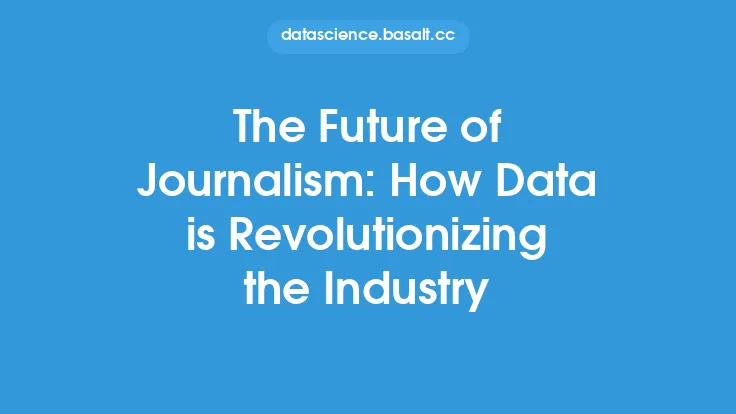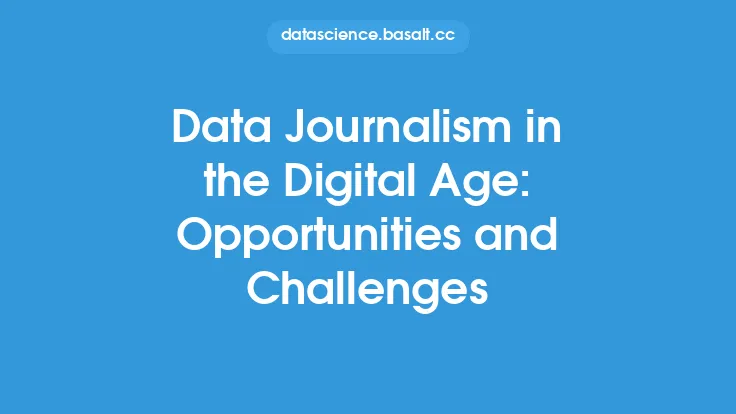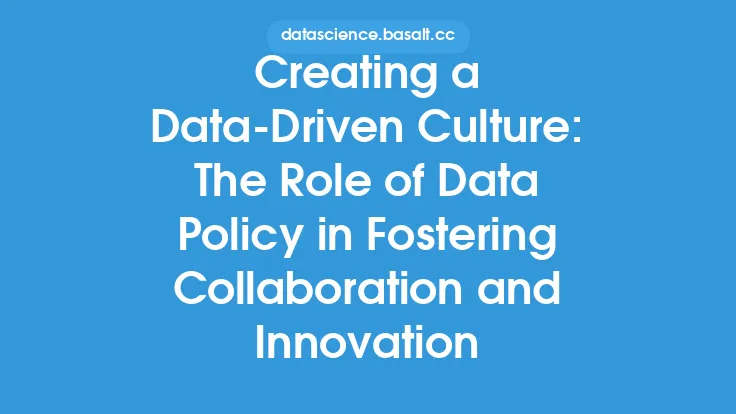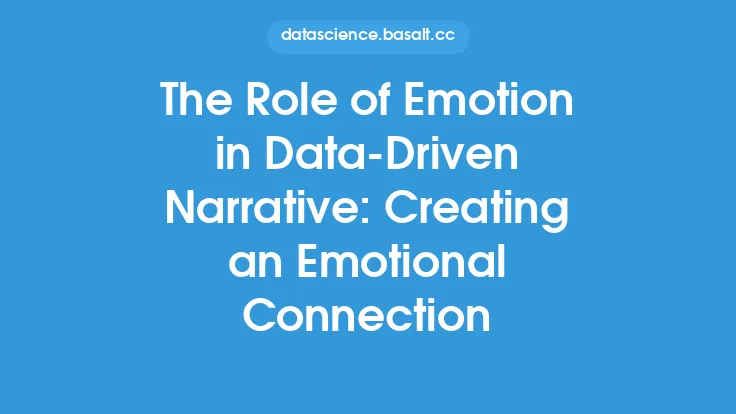Investigative journalism has long been a cornerstone of a free and functioning democracy, providing a crucial check on power and holding those in positions of authority accountable for their actions. At the heart of this endeavor is the pursuit of truth, often hidden behind a veil of secrecy, misinformation, or outright deception. The role of data in investigative journalism has become increasingly pivotal in uncovering these hidden truths, offering journalists a powerful tool to dig deeper, analyze complex information, and present findings in a clear and compelling manner.
Introduction to Data Journalism
Data journalism, a subset of investigative journalism, involves the use of data and statistical analysis to uncover, analyze, and present news stories. It combines traditional journalistic skills with the ability to work with data to find and tell stories. Data journalists use various techniques, including data mining, statistical analysis, and data visualization, to extract insights from large datasets. This approach not only enhances the depth and accuracy of reporting but also provides readers with a more nuanced understanding of complex issues.
The Process of Data-Driven Investigations
The process of conducting data-driven investigations typically begins with the identification of a potential story or area of interest. Journalists then seek out relevant datasets, which can come from a variety of sources, including government records, corporate reports, and social media platforms. Once obtained, these datasets are cleaned and analyzed using specialized software and techniques, such as SQL for database management, Python or R for statistical analysis, and Tableau or D3.js for data visualization. The analysis phase is critical, as it involves identifying patterns, trends, and anomalies within the data that can inform the narrative of the story.
Tools and Technologies in Data Journalism
A range of tools and technologies are available to data journalists to facilitate their work. Spreadsheets, such as Microsoft Excel or Google Sheets, are often the first point of contact for data analysis, allowing for basic data manipulation and statistical calculations. For more complex analyses, programming languages like Python and R are indispensable, offering libraries such as Pandas, NumPy, and Matplotlib for data manipulation and visualization. Additionally, data visualization tools like Tableau, Power BI, and D3.js enable journalists to create interactive and dynamic visualizations that help readers understand complex data insights.
Challenges in Data Journalism
Despite its potential, data journalism faces several challenges. One of the most significant hurdles is accessing relevant and reliable data. Many datasets are not publicly available, or their release is restricted due to privacy concerns, legal issues, or deliberate obstruction by those who wish to keep information hidden. Furthermore, the sheer volume and complexity of data can be overwhelming, requiring specialized skills to analyze and interpret. Journalists must also be mindful of data quality issues, such as missing values, outliers, and biases, which can significantly impact the validity of their findings.
Ethics in Data Journalism
Ethical considerations play a crucial role in data journalism, particularly when dealing with personal or sensitive information. Journalists must ensure that their methods of data collection and analysis are transparent and respect privacy laws and ethical standards. This includes anonymizing data when necessary, obtaining informed consent from individuals whose data is being used, and being cautious not to cause harm or discrimination through the publication of certain data insights. Moreover, the presentation of data should be fair and unbiased, avoiding misleading visualizations or interpretations that could distort the truth.
The Impact of Data Journalism
The impact of data journalism can be profound, leading to significant reforms, exposures of wrongdoing, and changes in public policy. By providing a data-driven narrative, journalists can cut through rhetoric and misinformation, offering the public a clearer understanding of issues and empowering them to make informed decisions. Data journalism has been instrumental in numerous high-profile investigations, from uncovering financial frauds and corruption to analyzing the impact of government policies on different demographics. Its ability to hold power to account and to give voice to marginalized communities makes it an indispensable part of modern journalism.
The Future of Data Journalism
As technology continues to evolve, the future of data journalism looks promising. Advances in artificial intelligence, machine learning, and natural language processing are expected to enhance data analysis capabilities, allowing for more efficient and deeper insights into complex datasets. The increasing availability of open data initiatives and transparent government data policies also bodes well for the future of data journalism, potentially unlocking new avenues for investigation and analysis. However, these advancements also bring new challenges, such as the need for journalists to develop new skills to work effectively with emerging technologies and to address issues of data privacy and security in an increasingly digital world.
Conclusion
In conclusion, data plays a vital role in investigative journalism, enabling journalists to uncover hidden truths, analyze complex information, and present compelling stories. Through the use of data analysis and visualization tools, journalists can provide deeper insights into issues, hold power to account, and foster a more informed public discourse. As the field of data journalism continues to grow and evolve, it is likely to remain a critical component of investigative reporting, offering new possibilities for storytelling and accountability in the digital age.





